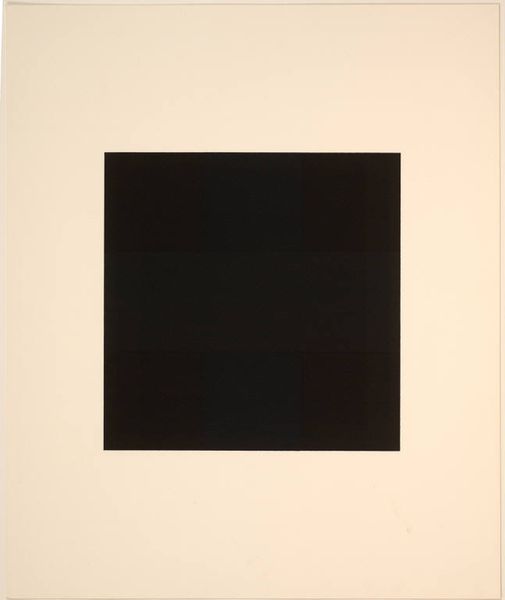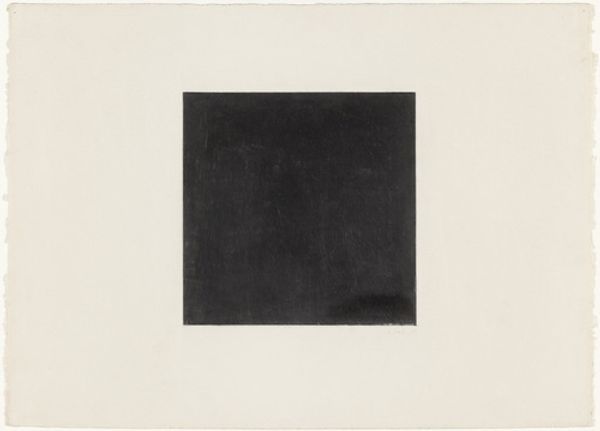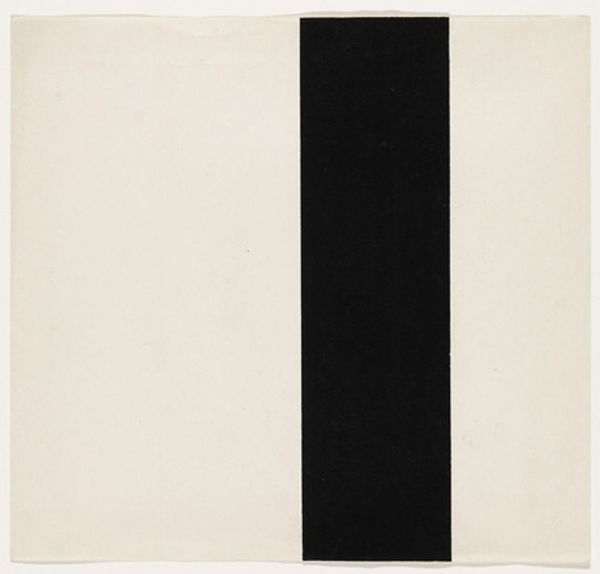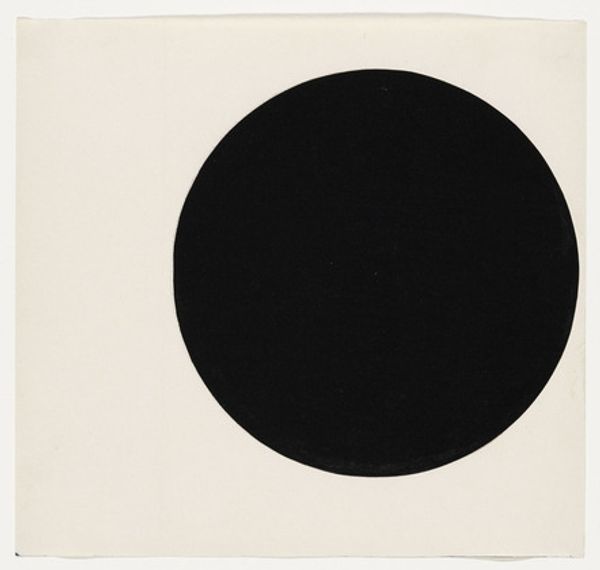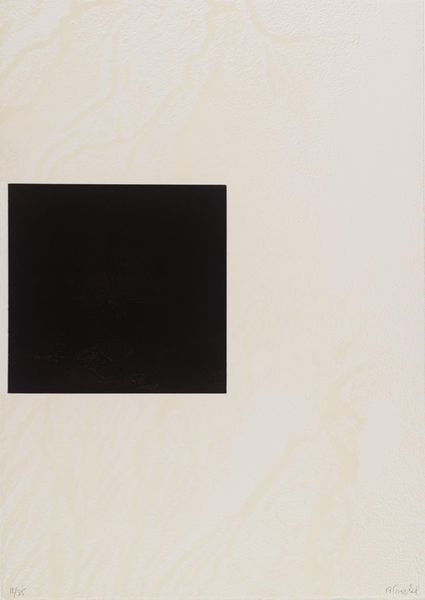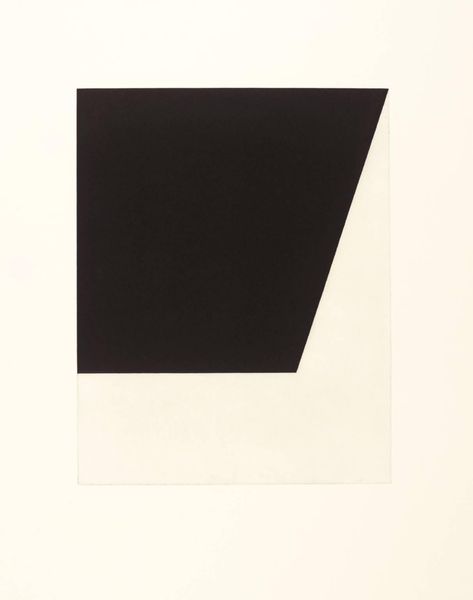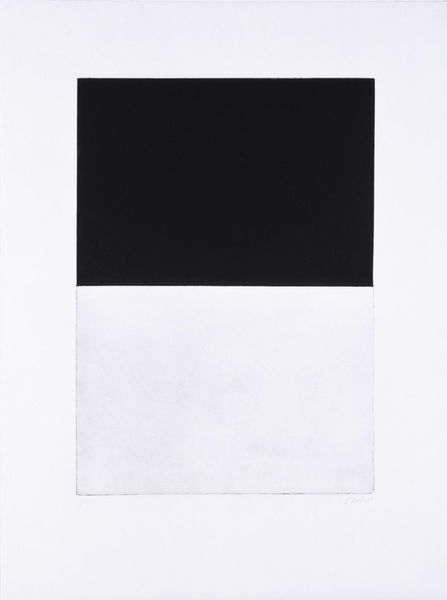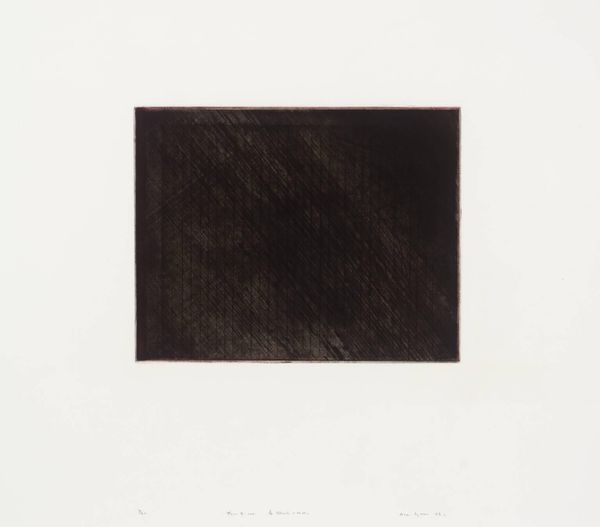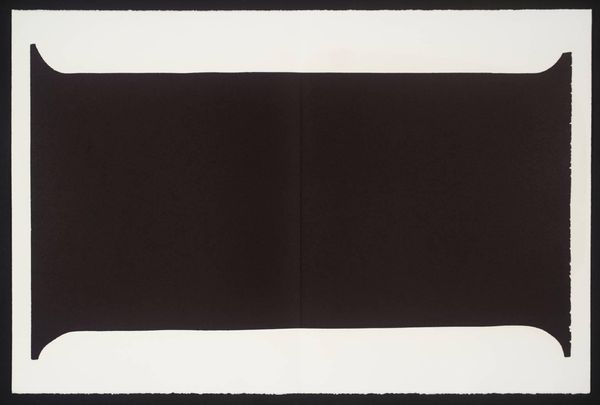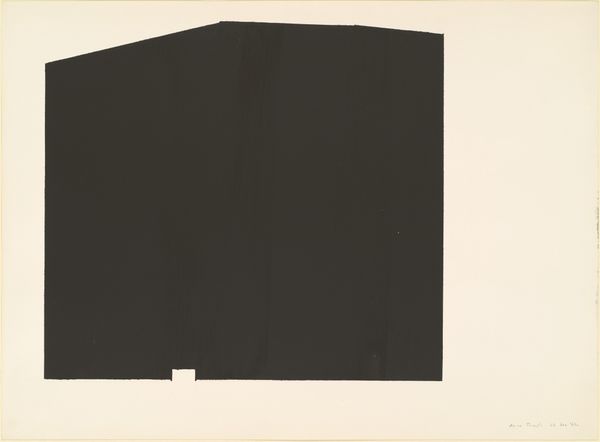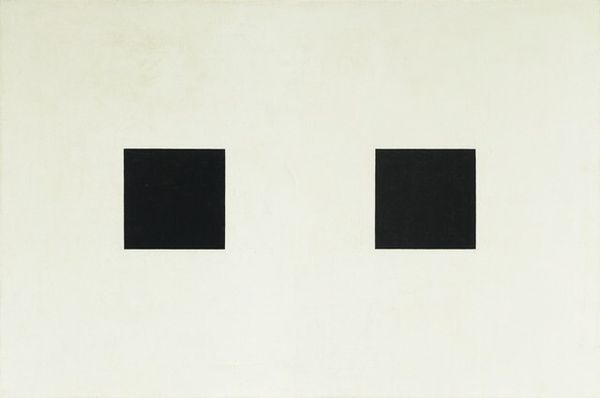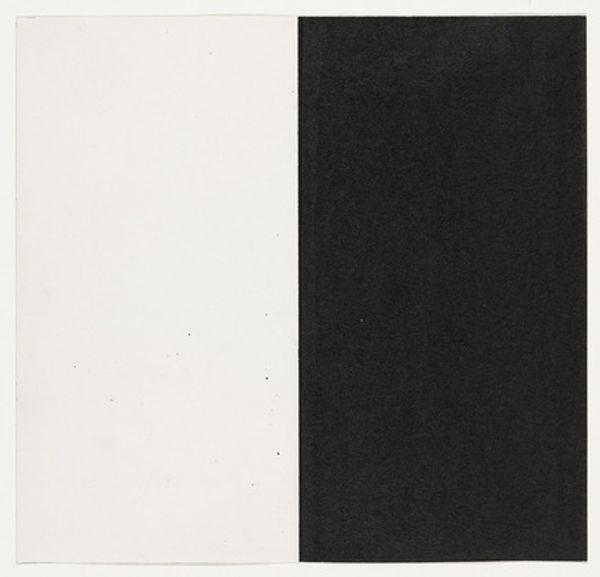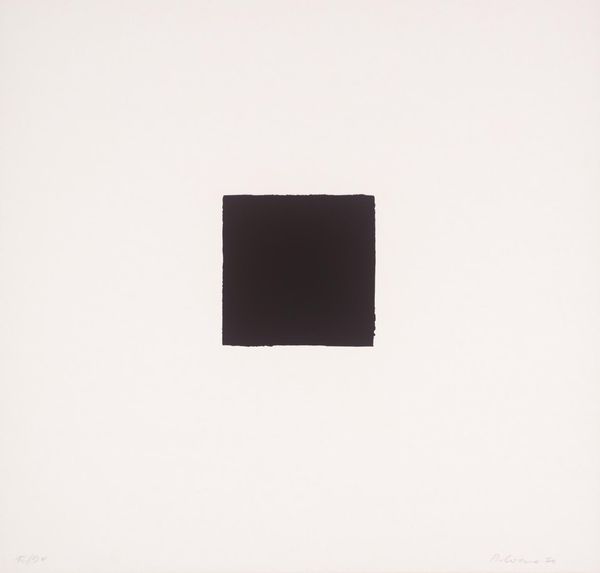
painting, acrylic-paint
#
painting
#
minimalism
#
colour-field-painting
#
acrylic-paint
#
rectangle
#
geometric
#
abstraction
#
modernism
#
hard-edge-painting
#
monochrome
Copyright: (c) Ellsworth Kelly, all rights reserved
Curator: It feels stark, almost like a void pressing against a vast expanse of nothingness. There's a severity in its simplicity that both intrigues and unsettles me. Editor: You’re reacting, I suspect, to the distilled essence of form that Ellsworth Kelly offers us in "Square Form," created in 1951 using acrylic paint. Note how Kelly presents a flat, monochrome black square against an off-white background. Curator: Yes, it’s the severity of that hard-edged black square, aggressively claiming its space. Black as the symbol of subconscious? Perhaps also a minimalist refutation of illusionistic depth and representational art. Editor: Precisely. He pushes the boundary between figure and ground. Look at the subtle imperfections of the edges. These deviations hint at the hand of the artist and introduce an organic element, a deliberate subversion, maybe. Curator: Those imperfections invite consideration, yes, transforming a basic geometric form into something personally invested, like a coded message, possibly touching primal instincts of protection versus invasion. How fascinating! Editor: Consider the color field aspects, too. Kelly, like Rothko and Newman, encourages an immersive experience by paring down visual information. Semiotically, the signifier becomes inseparable from the signified—it’s *just* a black square, *and* that is the point. Curator: Stripping away excess like this forces one to focus on pure shape and form—essential, I think. I now realize the symbolism isn’t in a representational element, but in the experiential confrontation of the form itself! Editor: Exactly. The material qualities of the paint and the canvas themselves become primary. Kelly’s act becomes a philosophical exercise manifested as form. What appeared stark initially unveils layers of complexity in line, shade, form, and medium, to express. Curator: What began as seemingly oppositional tension can harmonize. We see now how simplicity can actually invite multifaceted reflection, turning something visually mute into a strangely profound experience. Editor: And, in the end, hopefully offer each of us space for personal meaning through the intrinsic elements of abstract design.
Comments
No comments
Be the first to comment and join the conversation on the ultimate creative platform.
